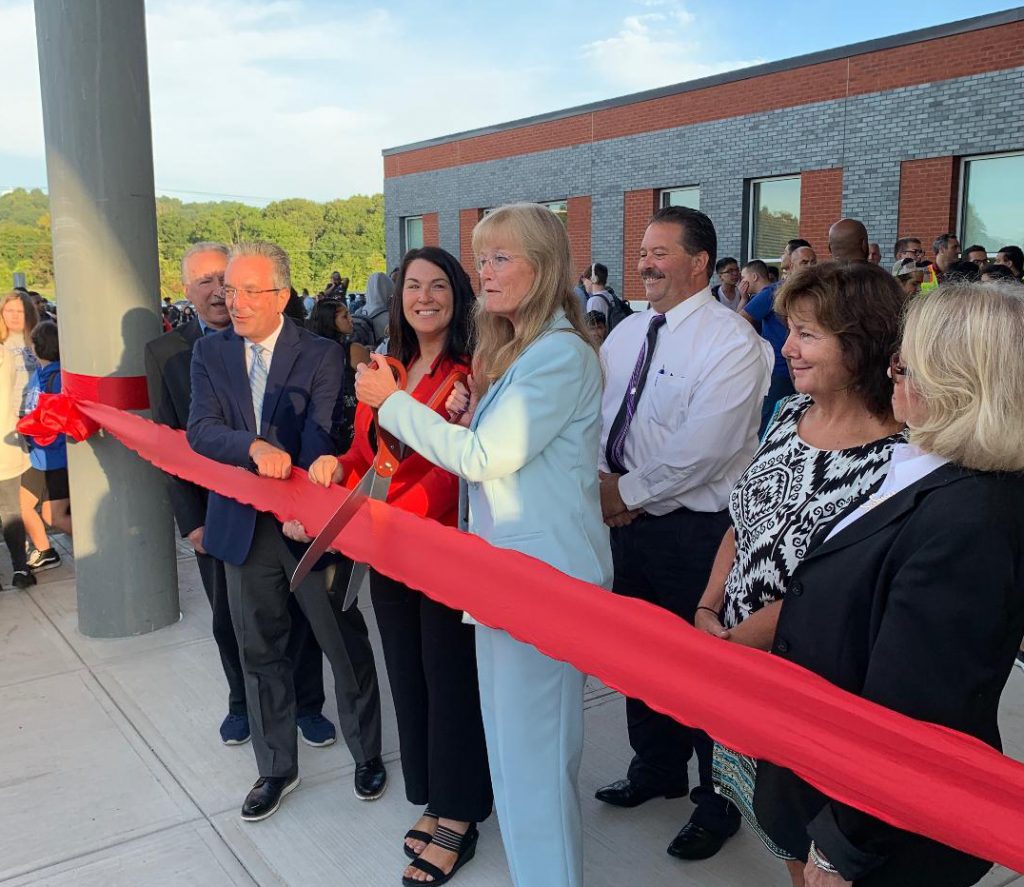
By Michael P. Walsh
Special to the Voice
Mayor Nancy R. Rossi cut the ceremonial ribbon Tuesday with Superintendent of Schools Neil C. Cavallaro and Principal Dana Paredes to mark the first day of school at West Haven High School and welcome the approximately 1,600 students to the 2019-20 school year.
After greeting students, teachers, faculty and staff, Rossi toured West Haven High’s newly completed addition, which is part of the Circle Street school’s $130 million reconstruction.
Designed by Antinozzi Associates of Bridgeport to accommodate 1,598 students, plans for the reconstructed high school also include renovating the existing building. The total finished project has an area of 265,959 square feet, according to Kenneth Carney, chairman of the West Haven High School Building Committee.
Carney said the completed school will offer a cutting-edge media center and advanced STEM classrooms and laboratories for science, technology, engineering and math, as well as upgraded public areas for the school and community. The fully air-conditioned building will have lower maintenance and operating costs while also offering enhanced access and security, he said.
Carney said the project’s construction phase, also known as Phase III, is composed of three major “subphases” to allow the school to offer a full academic curriculum throughout the project.
Gilbane Building Co. of Glastonbury is the project’s construction manager, with Amar Shamas serving as the project executive. The Capitol Region Education Council of Hartford, or CREC, is overseeing the construction financing.
Carney said the construction phase, which began in April 2018, is expected to take about three years to complete, with a projected occupancy of new spaces in fall 2019 through 2021. Site restoration work is expected to continue until spring 2022, he said.
Carney confirmed the project is on schedule and on budget.
The project’s first subphase includes constructing the food services, building services, tech-ed shops, media center, auditorium, music and arts classrooms, and administrative offices to permit the transferal of building uses, thereby opening other parts of the existing building for renovation or demolition.
The second subphase calls for renovating the existing eastern three-story building after demolishing the existing cafeteria and media center.
The third subphase includes demolishing the existing auditorium and music spaces, renovating the northern wing of academic spaces, and demolishing the existing gym and southern academic building.